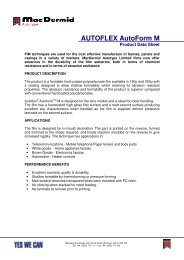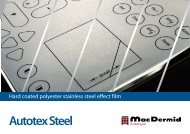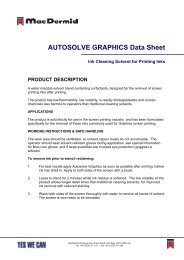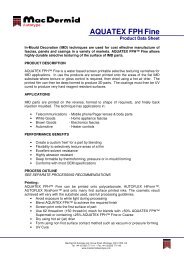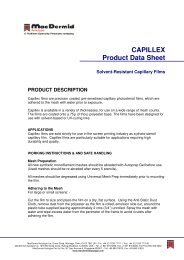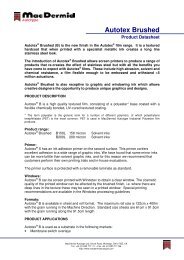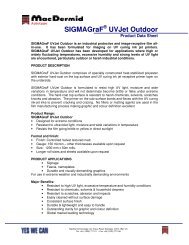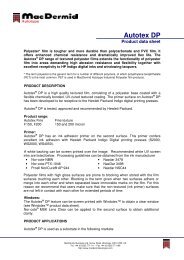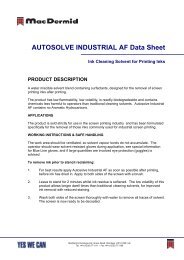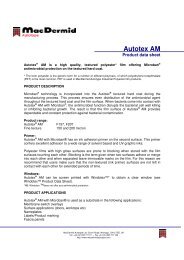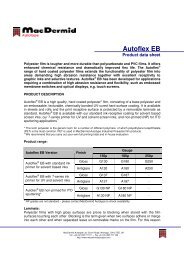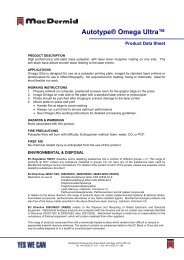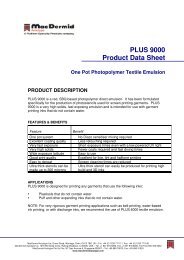Screen E-Book (.PDF) - MacDermid Autotype
Screen E-Book (.PDF) - MacDermid Autotype
Screen E-Book (.PDF) - MacDermid Autotype
- No tags were found...
You also want an ePaper? Increase the reach of your titles
YUMPU automatically turns print PDFs into web optimized ePapers that Google loves.
Moire, causes and curesis a half-truth. Given that most of us useangles such as 7.5°, 22.5° etc. the real ratiobetween mesh and image is no longer asimple calculation (you need trigonometry!)so you can get perfectly reasonableresults from an integer ratio, as an examplebelow will show.But even if you follow such rules, you canstill find yourself in big trouble. Not onlycan the resulting moiré be ugly, but it canalso be ugly and wavy – making it doublyunacceptable to you and your customer.And sometimes it affects just one colour,sometimes more. And sometimes it affectsone tint but not another. It can bevery frustrating.There are two sets of explanations for allthese problems. The first are mathematical.The second are physical. Let’s get themaths out of the way first.Simple formulae for calculating moiré areuseless when it comes to finding out moirébetween very different patterns. The standardformula ‘proves’ that you can have nomoiré between a 305 mesh and a 63 lpiimage (120/25), yet do a print and there itis. The <strong>MacDermid</strong> <strong>Autotype</strong> Mesh MoiréCalculator carries out the very complexmaths required for the more sophisticatedformula and a typical screen shot is shownin Figure 4.The columns for Moiré K values and Visibility,the choice of dot shape and K Max are for advancedusers and are explained in the Helpfile for the MMC.There’s a lot going on, but just look at thecolumn marked Moiré LPI. For most anglesthe LPI of the moiré is rather high and youwon’t be able to see it. But at 37.5° youhave a moiré that is low frequency, givinga high MRN=63/10.56=5.96 (look in theDots per moiré column), and at the otherangles there is only high frequency moiréwith MRNs all below 4.Now let’s look more closely at that 37.5°moiré and see what happens when, asshown in the TPI column (the left-hand column),the TPI (the actual mesh count, notthe manufacturer’s theoretical number) ofthe mesh changes a little bit (e.g. becauseof tension variations over the mesh).Figure 4 Calculating themesh moiré possibilitiesfor a 63 lpi print with a305 mesh (25/120)110



